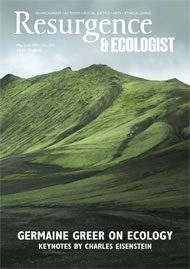Mindfulness is a word that is insinuating itself into the English language. But unlike fracking and selfies, whose ugly tones have forced themselves on us, mindfulness has a warmth and generosity that is enveloping and comforting. Once heard, the word pops up in all kinds of unexpected places – at the Davos summit, on the radio, in a chance conversation. And once its meaning is understood, it is a word one relishes. For Mindfulness is what it says: a state of mind that is full, connected, alive and responsive. It is state to which I aspire.
Leaping Hare Press anticipated the current interest in Mindfulness with a beautifully presented and illustrated series published from 2011 onwards: The Art of Mindful Gardening; Mindfulness and the Art of Urban Living and Einstein and the Art of Mindful Cycling are – were – my favourites. But late last year a new title appeared, which summed up all the reasons why the state of mindfulness should capture our imagination.
This is Mindfulness & the Natural World written by Claire Thompson; and last autumn she came to Emmanuel College, her alma mater and my new home, to launch it. Its proposition is simple: our wellbeing and the natural world both benefit from the state of mindfulness, which she urges us to embrace.
In the medical and spiritual worlds, mindfulness describes a meditation technique that helps people focus on the present moment: noticing detail, recognising the qualities of those things immediately around us and utilising the quiet of the moment; it is non-judgemental and aims to induce relaxation, peace and an ability to manage the pressures on us, drawn from the sensations that we experience in that place and space, right now.
In everyday life, mindfulness similarly encourages us to focus on the minutiae of our surroundings and our feelings as we experience them. It encourages us to empty our minds of the clutter of things to do, commitments made and worries we carry with us. It encourages us to stop rushing, to notice and appreciate the tiny details of the world around us, and to take comfort and build strength from our ability to cope with the pressures of daily life from what we see.
The truth is that most of us are too busy racing around to be aware of much that surrounds us, never mind the exquisite details of Nature that require time, and quiet, to be spotted. One of my most vivid early work memories is of visiting a Nature reserve on the Pembrokeshire Coast with one of its voluntary wardens, naturalist Guy Hains. As I skipped with delight along the path to the sea, he stopped me: “Be quiet, be calm. You will never see anything if you rush like that.”
I’m not sure I ever really learned that lesson, but with Claire Thompson’s help I am now trying. She talks of her own awakening sense of mindfulness, when visiting a Chilean National Park: “As I stood there, looked and listened for a moment, I noticed the feeling of my feet touching the ground. I heard the melodious song of a bird in the understorey. I sensed the stillness and vastness of the lake. I connected with the peace and silence all around me. I took a deep breath of pure, fresh air. I felt grounded and anchored.”
Claire’s book consists of a series of chapters on different aspects of mindfulness and Nature. She speculates on why Nature can inspire a particularly intense experience of mindfulness, and also why as a society we are losing touch with Nature. The distractions of modern life are one cause – or excuse; but a more abiding reason may be that we have become too distracted from ourselves, lacking the time or being unwilling to listen to our inner voices and the lessons Nature can teach us.
Yet Nature can bring us so many benefits. Thompson extols the therapeutic value of listening to birdsong, a cycle ride in drenching rain, observing the sharp quality of a ladybird’s marking and – my passion – a bracing walk in beautiful countryside. And she explains the value to Nature and of us taking it seriously now; a mindful approach to Nature informs not just our personal response but society’s wider responsibilities to the planet.
For surely, as she emphasises, it is only if we truly see Nature, absorb its beauty and functionality, understand its complexity and recognise our interdependence with it that will we fully wake up to our fundamental dependence on it. In a society where
the quick fix has dominated, Thompson urges us to use our mindful skills to take a much longer-term view. She concludes: “Only a genuine love for the natural world will give us the desire to care for and protect it. ”
And that, ultimately, is a challenge we cannot ignore.






